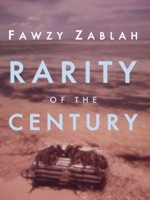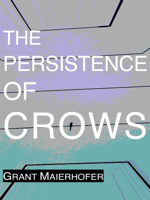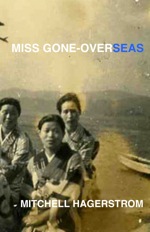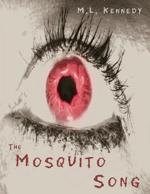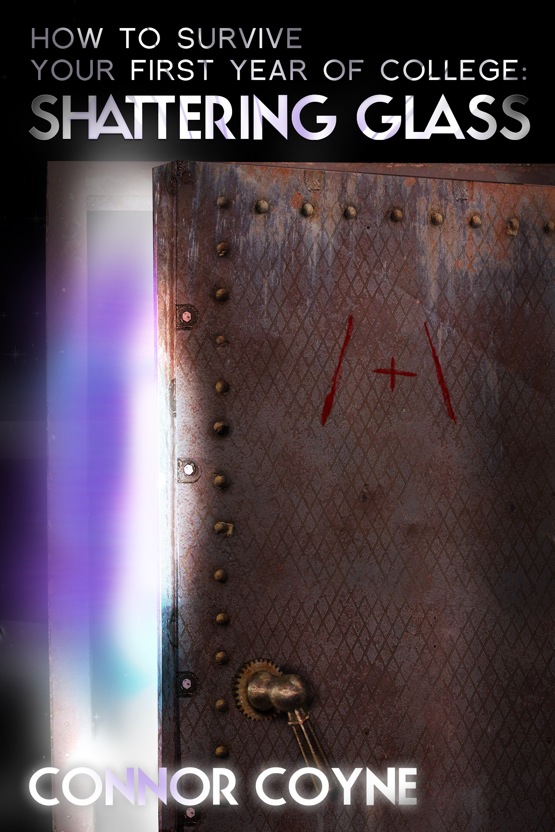
Tiny TOE Press: Since you have already run a successful Kickstarter: say someone wants to get their project funded but is new to this platform. What advice would you give them? How do you keep your supporters engaged (with updates) and actively find new ones?
Connor Coyne: The first recommendation would be just to do some nuts-and-bolts homework. The “Kickstarter School” maintained by the site (and I assume Indiegogo and other crowd sourcing platforms have something similar) are filled with simple, practical suggestions that can keep you from learning the hard way. Also spend some time looking at successful projects and what makes them tick. Finally, try to make sure that there are several plausible “paths” to obtaining successful funding; Hungry Rats was funded at about 130% and a big reason for that was that I had funding sources far in excess of the funds I was requesting. Shattering Glass is cutting it far more close, because it’s my second novel (eg. a bit less of a “novelty”) and a much more ambitious goal, but hopefully I’ve accounted for that.
Once the campaign is launched, I’d say it’s best not to put all your eggs in one basket. So for example, my greatest resource is Facebook; I have a writers’ page with 350 Likes and over 1000 Friends, and on the first day of the campaign I alphabetized these and started writing notes (personal notes, I should add) to anyone who I thought might be interested. But it’s very unlikely that that’s going to get me to $5600; so I’m also hitting up blogs, emailing friends, speaking to people in person, trying to tap into the literary scenes in both Flint and Chicago, getting testimonials, etc. If you have several avenues for support, then you aren’t stranded if one of them underperforms. There’s room for spontaneity and improvisation in a campaign like this, but I think success also requires careful planning.
Also, don’t jump into it blind. Get advice from people you trust. They’ll see some of the problems you’ll miss.
TTP: You have lived in Chicago and New York City, but you still moved back to Flint, Michigan, your hometown, to start your family. Is this a testament to the gravitational pull of people’s birthplaces, regardless of where those places are, or is there inspiration in Flint – that once great American city – you can’t find elsewhere?
CC: It’s a bit of both. Hometowns tend to be more than just places for us, because they are so intimately connected with our first memories and the people who helped us form our human and social identities. I’ve had friends from far-away and postcard homes — Uzbekistan, Paris, and so on — and friends from the Boringtown, Indiana, but everyone (or at least the romantics) have some sort of a lasting connection, or at least feelings of intensity, toward their hometowns.
That said, I do think, in some sort of “objective” sense, that Flint is a very special and a very important place. It’s a place where, to take rhetorical liberty, the first world meets the third world. Two research universities have a presence here and the Mott Foundation is one of the largest and most influential in the world. On the other hand, it can take hours for the police to respond to abductions and aggravated battery, and houses occasionally explode around town when the landlords don’t turn off the gas on evicted tenants. A short answer can’t do it justice, but there’s a lot of extremity here.
It’s also a place where the American dream hit its apogee — the highest per capita income in the U.S. until the 1960s — and then abruptly shattered. Flint isn’t an old town. In 1900 it was a few thousand people. By 1950 it was pushing 200,000, and now it’s dwindled to half of that. And really, people accuse Flint of living in the past, but it is often argued here that we’re living in the future as well; the problems that Flint started feeling in the 1970s and 80s (long-term unemployment, defunding of municipal services, deindustrialization and disinvestment) are cropping up around the country now. Look for the same issues to appear in Phoenix, Vegas, even L.A. as their water supply contracts and they aren’t able to meet the needs of the millions of people who have moved there.
Anyway: In addition to being my home and a place that is important to me personally, I suppose this means that Flint’s confrontation of crisis, with predictable foolishness and surprising nobility, is epic to me. It is, to me, just as epic a setting as New York City or New Orleans or Seattle or any other more glamorous city.
Plus, the food is really good and cheap here.
TTP: How do you want to be remembered as a writer? As a person?
CC: I think kindness is underrated… kindness as opposed to compassion, empathy as opposed to sympathy. I sometimes feel like listening is a lost art, simply due to the complexity of life now. Selective listening is a practical response. I would hope to be remembered as kind, empathetic, a good listener. I don’t know that I am those things, but that’s what I strive for.
In terms of writing, I’ve been bitching about this on Facebook lately, that I sometimes have a hard time finding people who love the kinds of literature I love, which is to say experimental. And not necessarily “experimental literary,” since narrative or linguistic experimentation can really happen across genres (and the flouting of genre-boundaries is one of its favorite transgressions)… but a real forward-looking, contemporary experimentation. Literary experimentation in the U.S. has, I think, been too narrowly academic for too long. Deconstruction / Post-Structuralism / Post-Modernism has really damaged the critical conversation by embracing recursive despair and irony as a catch-all. I feel like Pynchon transcends that, even as he embodies it. I like what I’ve read by Miéville, too. I connect a lot with the films of Baz Luhrman, even the “bad” ones. That’s kind of the camp I’d like to fall into, in style if not in stature; an ambitious experimental romanticism. But I’m having as hard a time finding “ambitious experimental romantic” readers as I am “ambitious experimental romantic” literature, so if you have any suggestions for either, let me know!
TTP: Like the majority of people visiting (and supporting) your Kickstarter page, I have not read ‘Shattering Glass,’ but my curiosity is piqued. Tell us what it’s about and how Greek religion comes into play and why Dunya talks with a fan and the moon in this book trailer?
CC: The plot in a nutshell is a send-up of a lot of young-adult, amateur sleuth-type fare. I guess that spares some suspense: it’s the same story as Harry Potter or Nancy Drew or Madeleine L’Engle’s awesome novels. Sure, the finer points vary. Four students go off to a mysterious but prestigious university in a crumbling factory town, and become roommates in an especially weird dorm. That’s when they discover that there are malign forces manipulating them and their friends, trying to steer events toward an unknown and ominous goal. But throughout the students are struggling to overcome the demons of their own pasts, to learn about love, to plan for their futures. To decide who they are and what they want. It’s nice writing about college students because sex and drugs are on the table and I think that raises the stakes all around.
What probably makes Shattering Glass different from those other authors is the way in which it is written, and the video you asked about is a great example. At its most sedate, Shattering Glass is stylized — descriptions and conversations tend to exaggerate and embellish the story’s “reality” because everyone is living in a state of extremity (see Flint, above). Sometimes, the intensity of emotion, or vision, or imagination, becomes so powerful for the characters and their world that it overrides what is technically “possible.” It’s why I have described this sometimes as a “psychedelic novel.” When this happens, it is up to the individual reader to determine what’s real (everything? nothing?) and what’s not. So in that scene from Chapter 5, Dunya runs off to a diner after having a fight with a friend and worried about her future at the school, and she has a rather intimate conversation with the ceiling fan and the man in the moon. That’s about as far as I’m willing to carry the interpretive lead.
I can’t say much about Greek religion without unleashing demoniac fanged Spoilers, so I’ll just say that I think theology students would either love the book or hate it. For everyone else, I needed to use Google in order to write it, and you’ll probably need Google in order to read it.
TTP: Collaboration is important to you. ‘Shattering Glass,’ like your first novel, ‘Hungry Rats,’ wouldn’t be around without the help of talented people. How does the extended version of your Thank You Page read? By the way, Arlow Xan provides some sweet tunes.
CC: I went to college for theater (acting and directing) and realized that I just didn’t have the inner calm or diplomatic tact to be a happy person in that line of work. That said, collaboration — real, legit, bona-fide collaboration — can take an artistic piece to new heights, as long as the chemistry is there. And changes in the publishing industry, I think, are incentivizing collaboration in ways that was uncommon before. Super small-presses are tied to their communities; they live and breathe with its cultural life. Social media is enabling publishers to promote work on the cheap, but this is most effective with a collaborative production, and only even possible with community participation. There’s a “great leap” to be made here — “community novels” or somesuch — and some may be making it. Hungry Rats and Shattering Glass aren’t there… yet.
But self-publishing and crowd-sourcing are, still, inherently collaborative, in the best way, and so that’s a start. A long-winded lead up to: The Thank You Page. I have a special relationship with Sam Perkins-Harbin (designer) and Reinhardt Suarez (editor) in that they are game for just about any project as long as it is interesting, and as we have conversations the product fleshes itself out. Sam’s original charge was to design eight separate covers. That’s a huge task, as you know how much effort goes into designing one cover. Not only did Reinhardt edit Shattering Glass, but he formatted it for the ebook. Sometimes the storyline would change and Sam would change his whole cover around the new development. Meanwhile, I’m looking at his covers and they give me ideas for plots and conspiracies. Sometimes Reinhardt would pick up on some enticing detail or bit of description that he thought I should elaborate, and that would spin out into a whole half-chapter. Our working relationship is very elastic, and I think it gives the book a sort of restless energy.
Another dirty little secret; Shattering Glass was supposed to be written very quickly, and so I took a liberty I usually try to avoid and just used people I knew as the templates for certain characters. As time went by, they diverged, often drastically, from their inspiration (and I wonder if my friends will ever read this and think, “so that’s obviously me, but I never did that!”) but I still feel like that initial liberty is what kept the story from just being an unstructured mush of themes and ideas.
And finally, there are a lot of people helping out in other significant ways. Almost every time I have approached a musician about allowing me to use their music in a promo (and have little to pay, by the by) they have been gracious and accommodating. Elisabeth Blair’s music is incredible. Arlow Xan’s music is incredible. Their work is evocative of Shattering Glass, I think. So their willingness to play along really gives the story a different sort of life.
Also, I have a number of people who have advised me on the Kickstarter campaign, and theirs have been some of the best ideas.
I really could go on and on… I’ve had a lot of people to help out. Otherwise, it would be a very quiet, lonely undertaking.
TTP: The setting in ‘Shattering Glass’ is a mash up of the University of Chicago, where you got your undergraduate degree, and Flint, where you currently live. Are there any other elements in the book that are based on reality.
CC: Probably the most significant reference after Chicago and Flint is Alejandro Jodorowsky’s mindtrip The Holy Mountain, which is adapted for the stage in Shattering Glass as The Moldy Fountain. Yeah, The Holy Mountain was another “ambitious experimental romance” in a way, and I wasn’t planning for it to have a great impact, but there was great resonance between… hm. The film presents reality as incomprehensible and inescapably violent, but also as incomprehensibly beautiful. I found a lot of correspondence there. Also, it’s filled with psychedelic theosophical gobbledigook, which worked well with Shattering Glass.
Shattering Glass also has a lot of reference to Japanese culture, from ninja garb to Akira to the suicide forest of Mount Fuji. That was totally unintentional; I have no idea why it fell out that way.
There are also a lot of references throughout the novel to the mainstream publishing industry (particularly textbooks), and how fucked-up and regressive it is.
And there are a lot of Flint politics embedded in Shattering Glass, although I doubt that someone not from Flint would even notice that they were there.

TTP: Did you draft the schematics of Arkaic University, as in the map (seen above) and the plot, before writing the novel? Describe your writing process, i.e. time of day, how long, music, etc. Will the map be included in the printed book?
CC: Okay, this is super nerdy, but when I was a senior in high school my best friend and I went poking around the half-abandoned campus for the Michigan School for the Deaf in Flint, which is seemingly on the highest hill in the city, with a spectacular vista and full of musty mystery. We imagined that there could be a university there (Flint University = FU, ha ha, get it?) and that ended up being the basic inspiration for the Arken County Lunatick Asylum and Arkaic University. I used to work at a reference company and I edited an online dictionary of mental illness, and learned about a lot of (sometimes) well-intended but really fucked-up treatment regimes in old sanitariums, of which Flint had one (Oak Grove Sanitarium, now long departed).
Ironically, not only does the MSD still use that site, but they’ve partnered with the local Catholic high school to renovate their old buildings and offer a renewed urban campus for all of their students. It’s cool, driving by and seeing forklifts and scaffolding, and knowing that the same work would be happening at AU.
As for process, with Shattering Glass, I have to admit it might sound a little deranged, but I was upset over some personal drama when I was writing it, so whatever. I got on this kick where I would put my daughter to bed and sleep four hours, until about midnight. Then I would wake up and couldn’t sleep.
A lot of writers say that drinking and writing don’t mix; I have never found this to be the case. I find that, in moderation, alcohol and caffeine are the perfect creative lubricant. For Shattering Glass this was typically some kind of cherry moonshine and black coffee.
I need music too, loud (headphones) and endlessly repeated. Shattering Glass was a lot of moody synthpop stuff: Ladytron, MGMT, (sheepishly) even some Moby. Bjork. Gazelle Twin. Zola Jesus. “Amnesia” by Chumbawumba. I think there was one terrible night where I listened to “Milkshake” by Kelis for about six hours on end.
I’d write until about six in the morning, then catch a couple of hours of sleep before the next day began. This went on for three or four days a week for a few months until Shattering Glass was finished. It isn’t how I usually write, and it isn’t something I’m eager to repeat.
Also, yes, the map will be published with the book. I think of it like the world maps at the beginning of a fantasy novel.
TTP: What, if any, are the rules you follow when writing/editing?
CC: That’s my closely guarded secret. But I will say that I always establish several rather arbitrary and unreasonable compositional rules while working on a rough draft, and then completely discard them during the editing process. Rules enforce rigor to get something done with a certain force and energy, but you don’t want some contrived “rule” to restrain the life of the finished product. They’re a tool, not an end to themselves.
TTP: Distribution is probably the most challenging part of publishing a book. What are your plans for ‘Shattering Glass’ and how do they differ, if at all, from your tactics for getting ‘Hungry Rats’ to readers? Are you going to spend more time promoting the real book or the digital book? Who are you using as a printer?
CC: This causes me some angst, because my strategy with Hungry Rats relied very heavily on independent bookstores, and that didn’t work out well for me at all. A big part of it was my fault; I set the cover price low (for print-on-demand) — $16. But booksellers typically take 40% on consignment, which meant that I was actually losing money for each book sold. But moving copies through distant bookstores is a difficult strategy, and I ended up with copies of Hungry Rats scattered across Michigan and Illinois, and no easy way for me to get them back if they didn’t sell. I’m hoping to involve booksellers in Shattering Glass, but it has to be a more thoughtful, almost peripheral component.
Experience has taught me that, at least right now, the sort of hardcore readers (ie. happy experimentalists) that would enjoy Shattering Glass also, for the most part, expect to hold a book between their hands. I printed Hungry Rats through Lulu, and used them as a template for budgeting, but I’m shopping around for a better deal. Ebooks are wonderful, for low overhead, for quick release, for profit margin, for adaptability… but I’m also seeing that as a peripheral, or at least secondary, strategy.
Doing readings sold more copies of Hungry Rats than anything else, and so I’m expanding that plan for Shattering Glass. Specifically, I want to stage parties and performance art in lieu of straightforward “readings,” and hopefully that will both sell copies and fuel word-of-mouth promotion (the only kind that consistently work, I find).
Going back to the question about collaboration, these events are going to be the most collaborative thing of all!
TTP: I know you have a daughter, Mary, now. What has she taught you?
CC: Spontaneity. A light touch. Improvisation. By habit, I pathologically outline everything, and update my outlines, and then update them again. In some ways, non-linear narratives respond best to at least a sort of thematic premeditation. Sometimes it can be hard to deviate from these plans, even when it is the right thing to do. Having to respond to a two (now three) year old, who is really very sweet but endlessly challenging and unpredictable, has taught me to take my own plans with a bit of a grain of salt.
Hopefully, I am able to apply this lesson to publishing and marketing Shattering Glass as much as it has helped in writing it.
If you’d like to learn more about what you can do to help, please visit Shattering Glass Kickstarter. If you could offer assistance before July 31st, and spread awareness, that would be much appreciated.
Author Bio:
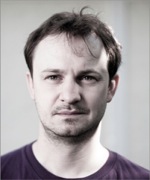 Connor earned his MFA from the New School and his BA from the University of Chicago. His graduate thesis adviser was Jeffery Renard Allen. Connor has been writing for decades, and as early as 1997 he was a winner of the Young Playwrights, Inc. annual contest for his play September. Since then Connor’s work has been published in the Santa Clara Review, Moria Poetry Zine, the Dick Pig Review, the Flint Broadside, and the Saturnine Detractor, and his plays have been performed at the University of Chicago’s University Theater and, once upon a time, at Flint Youth Theatre. Connor’s debut novel, Hungry Rats, a teen-noir set in Michigan, was published in 2010 through the Gothic Funk Press.
Connor earned his MFA from the New School and his BA from the University of Chicago. His graduate thesis adviser was Jeffery Renard Allen. Connor has been writing for decades, and as early as 1997 he was a winner of the Young Playwrights, Inc. annual contest for his play September. Since then Connor’s work has been published in the Santa Clara Review, Moria Poetry Zine, the Dick Pig Review, the Flint Broadside, and the Saturnine Detractor, and his plays have been performed at the University of Chicago’s University Theater and, once upon a time, at Flint Youth Theatre. Connor’s debut novel, Hungry Rats, a teen-noir set in Michigan, was published in 2010 through the Gothic Funk Press.
Connor believes that the arts exist in connection with each other, and is a strong advocate of creative collaboration. In 2004, he cofounded Chicago’s Gothic Funk Nation which hosted two reading series, a variety of art installations, performance art, and other events. The Nation had its own arts journal, The Paramanu Pentaquark, of which Connor is the editor-in-chief. Connor has been a perennial judge for the University of Chicago Scavenger Hunt (and once participated in its successful effort to build a functional breeder reactor), and a literary assistant to the Ojai Playwrights Conference, where he worked for director Abigail Deser and playwrights Lee Blessing and Susan Miller. In 2013, he was a designated the 7th Ward Artist-in-Residence of Flint, organized by the Greater Flint Arts Council in service of the City of Flint Master Plan, and funded by the National Endowment for the Arts and the Ruth Mott Foundation. Connor has also collaborated with Elisabeth Blair, Richard Whaling, Nova Moturba, the bkish literary blog, the ChiTown Daily News, Forge 22, Front 312, Arlow Xan, Broadside Magazine, East Village Magazine, Flint Youth Theatre, and many others.
After spending fourteen years in Chicago and New York City (and one heady summer in Romania), Connor has returned to his hometown of Flint, Michigan, with his wife Jessica and his daughter Mary. He lives in the East Village neighborhood where he grew up, and is very excited to participate in Flint’s thriving arts scene.
Official Site. Twitter. Kickstarter.
Campaign ends July 31st
To learn a little more about Shattering Glass, please watch the following video:



